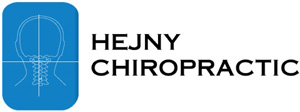 Migraines are a disabling neurological condition that can result in the sufferers missing out on the joys of daily life such as family time, social life, and even their career pursuits. For most people, their only option during a migraine attack is to wait it out, tucked in a cool, dark room, while lying down with a cold cloth on their forehead. This is one of the most comfortable options; however, it does not necessarily speed up the process of recovery. It may take several days to recover from the exhaustion brought on by a migraine. A popular misconception about migraines is that they are just really bad headaches. The truth is, migraines don’t always include head pain even though it is one of their main symptoms. Other symptoms include the following:
Migraines are a disabling neurological condition that can result in the sufferers missing out on the joys of daily life such as family time, social life, and even their career pursuits. For most people, their only option during a migraine attack is to wait it out, tucked in a cool, dark room, while lying down with a cold cloth on their forehead. This is one of the most comfortable options; however, it does not necessarily speed up the process of recovery. It may take several days to recover from the exhaustion brought on by a migraine. A popular misconception about migraines is that they are just really bad headaches. The truth is, migraines don’t always include head pain even though it is one of their main symptoms. Other symptoms include the following:
- Pounding head pain usually affecting only one side (not always)
- Visual disturbances or loss of vision
- Nausea and vomiting
- Extreme sensitivity to bright light, loud noise, and certain smells
- Dizziness or vertigo (a spinning sensation)
Migraines are extremely common among men, women, and even children. A total of 39 million Americans suffer from migraines, and they are the third most prevalent illness worldwide. In the United States, 1 of every 4 households has a person suffering from migraines. Migraines are most common in women and those between 25 to 55 years of age. There is a higher risk of developing migraines for individuals who have family members who suffer from migraines.
Table of Contents
Tracking Your Migraines
Keeping a migraine journal in order to track possible “instigators” of your migraines is a highly recommended practice by doctors and medical professionals. This method can help you identify any patterns or possible triggers leading toward the development of your migraines. There is a downloadable version of WebMD’s migraine diary here. This is a great tool that can help you decipher warning signs, record the type and intensity of pain, your food intake, how your stress levels were, and what activities preceded the onset of your migraine.
To learn more about the connection between head and neck injuries and migraines, download our complimentary e-book by clicking the image below.
There are certain known migraine triggers, and they unique for every individual. You may not see your exact trigger listed below, but the list gives a general guideline of things to be aware of and to avoid if possible.
Tyramine has been linked to migraines. This substance is naturally found in certain foods, particularly aged and fermented foods. These are a few places you will find it:
- Cured meats — hot dogs, pepperoni, salami, etc.
- Aged cheeses
- Some types of beer
- Smoked fish
- Foods high in protein if they have been stored for a long time or not kept cold enough
- Aged chicken liver
- Summer sausage and other meats that are air dried or fermented
- Red wine
- Soy sauce
- Sauerkraut
- Sauces that contain shrimp or fish
- Yeast extract
- Miso soup
Some triggers that are not related to tyramine are:
- Chocolate
- Citrus fruit
- Nuts
- Peanut butter
- Broad beans, lima beans, fava beans, snow peas
- Sour cream
- Sourdough bread
- Red plums, avocados, figs, papayas, raisins
- Caffeine — too much or too little
- Alcohol
Non-food related triggers:
- Menstruation: Possibly due to the drop in estrogen levels, many women complain of migraines a few days before their menstrual cycle.
- Your environment: A few triggers may be a general nuisance to most, but for migraine sufferers, the following could result in a migraine episode: strong perfumes or heavy scents, bright, flashing lights in a dark space, or the flickering sunlight through trees as you drive by them.
- Stress: The most common cause of migraines symptoms is stress. Anyone struggling with migraines is highly sensitive to this factor. In the wake of anxiety, shock, and worry, there is a chemical letdown that commonly leads to a migraine episode
This is not necessarily a list of things to avoid but rather to be aware of. If you notice a connection between migraine onset and any of these things mentioned above, it would be helpful to take steps to limit your exposure to them and possibly prevent further suffering on your behalf. This is not always a realistic option for people, which is why resolving the root of the problem can be the best choice. Here at Hejny Chiropractic in Spring Lake Park, Minnesota, we have had much success providing care that brings resolution for our migraine patients. How is this possible?
The Spine and Migraine Connection
As upper cervical chiropractors, we understand the connection between the central nervous system and migraines. Within the vertebrae that link the skull and the neck is one of the most important components to the central nervous system – the brainstem. The top two bones of the spine protect the brainstem. These bones are also designed to carry the weight of the entire head while allowing it the free range of movement that you enjoy every day. Any degree of shifting from proper alignment that occurs between these bones can put pressure on the brainstem within and cause dysfunction between the brain and body communication. A misalignment such as this could be sustained from a simple fall or even a minor car accident.
Our thorough examination process helps us identify the exact location of the issue. We use a gentle, precise adjustment method that encourages the bones to reposition themselves naturally, never needing to pop or twist the spine in a forceful way. Once the correct alignment has been achieved, the body starts to naturally restore and correct any damage that was done to the neck and muscles of the neck. Any interruption to the brain and body’s communication is removed, resulting in the patient feeling better overall. Major improvements in migraine symptoms from upper cervical chiropractic relief have been recorded in case studies. Some patients have even had full recovery with migraine symptoms never returning again!
To schedule a complimentary consultation with Dr. Hejny, call our Spring Lake Park office at 763-230-0116. You can also click the button below.
 If you are outside of the local area, you can find an Upper Cervical Doctor near you at www.uppercervicalawareness.com.
If you are outside of the local area, you can find an Upper Cervical Doctor near you at www.uppercervicalawareness.com.
